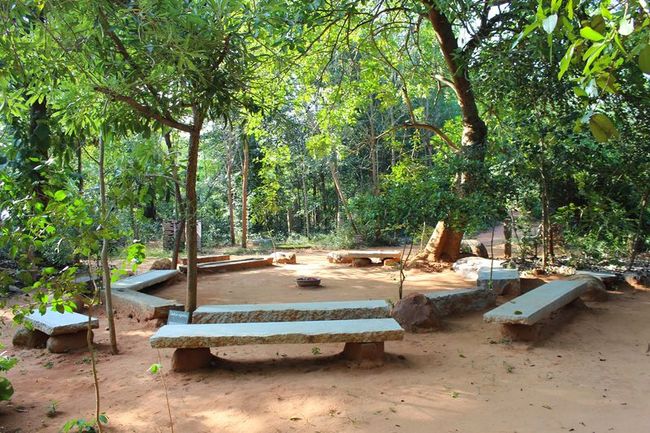One of Auroville’s greatest accomplishments has been the re-establishment of the Tropical Dry Evergreen Forest ecosystem that once flourished all along the Coromandel Coast, but was decimated by deforestation throughout the last 600 years. Auroville continues to plant trees, both within the community and around the world. The wisdom gained through researching, discovering, and nurturing hundreds of species of trees and shrubs in a humid tropical climate is now being shared outside Auroville by projects like Botanical Gardens and Pitchandikulam.
For every $2 you donate, one tree will be planted
And if you choose to make your donation a tribute via the form on this page, an email will be sent to the beneficiary letting them know how many trees will be planted in their honor. At a time when global climate change is on the minds of so many, your gift will warm their hearts and offset their carbon footprint at the same time!
You can also sign up to be a monthly tree planter. Planting a tree for every 70 miles that you drive will invest in our Earth’s potential to sequester the carbon that we are putting into the atmosphere. The US Department of Transportation (DOT) in 2020 calculated that the average number of miles driven per month in the United States was 1400, a record high.
If you drive 1400 miles per month, donating $40/month will plant 20 trees to help offset your carbon emissions
Give yourself and/or your loved ones the gift of deepening your relationship to our Mother Earth who nourishes us and feeds us every day of our lives.
All donations will go to the Auroville Forest Group
Each year, the Auroville Forest Group plants about 15,000 seedlings in dozens of locations within the Auroville area. Of these seedlings 90% are Tropical Dry Evergreen Forest (TDEF) species, the only living flora type indigenous to the Auroville area. The remaining 10% are local long term timber species which are planted as a part of the group’s sustainable forestry effort. Their main focus was (and still is) to plant seedlings that would produce a forest rich in terms of bio-diversity, which is why 173 different types of plants and trees are planted.



